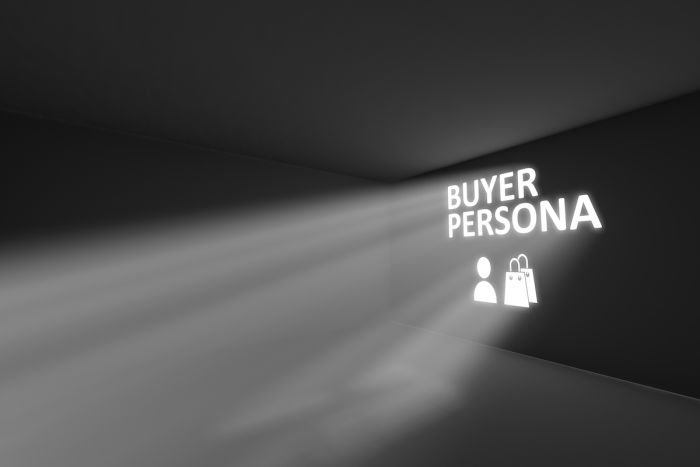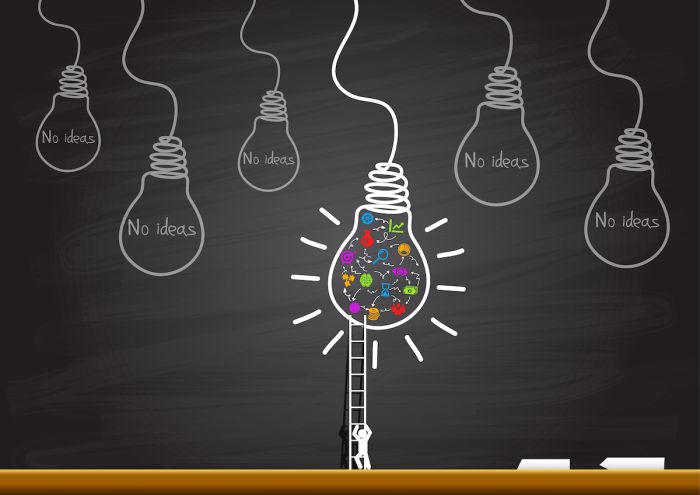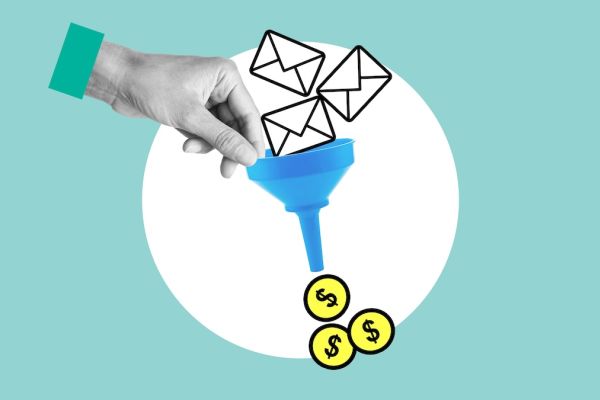Creative copywriting
Creative copywriting is any textual content produced on communication tools linked to the creative concept of an advertising campaign. Good campaign messages are based on real product benefits, and good creative copy always appeals to our emotions. In this article you can read about what makes good creative copywriting and what is needed to produce truly effective creative copy.
Creative copywriting always encourages action, i.e. buying.
There are two main types:
the one used for brand building, so called image
and the one used to boost sales or creative writing used in promotional campaigns.
In both cases, it is part of the creative concept, its textual expression. The text and dialogue heard during radio spots, the headline of print ads, the brand slogan, and even the brand name itself are the result of creative copywriting.
What is creative copywriting?
The essence of marketing content writing is that it informs, conveys knowledge and skills, and provides useful or entertaining content to the public without directly encouraging purchase.
Creative writing, on the other hand, clearly aims to mobilise the buying public. Take action: buy it, travel to it, see it, be there, because it will make your life better, more meaningful or even more convenient. You can make your daily life easier and your business more successful.
Creative copywriting helps to turn the need and desire for a product into a reality, and to turn that desire into action.
What falls into this category?
Creative writing is rarely a genre in its own right. This type of writing is part of the overall creative concept, one of its elements. Some examples of creative copy are not exhaustive:
- TV spot
- Radio spot
- Print advertisement
- Billboard
- CLP
- dm, e-dm
- Slogen
- Brand name
What is the USP (unique selling proposition) and what is its role in creative copywriting?
IF YOU ARE ACTIVE IN THIS GENRE, YOU WILL NEED THE FOLLOWING INFORMATION ABOUT THE PRODUCT.
- What are the benefits and advantages of the product?
- How do consumers relate to the brand? What is its image, what are its strengths and values.
- What are the strengths and weaknesses of competing products? How do competitors communicate? What is already working for them and what is not?
- USP (Unique Selling Proposition): the unique product advantage that makes your product stand out, differentiates it from similar products from competitors. This is the focus of the campaign message on which the whole creative concept will be built.
What is a buyer persona and what is a target group analysis for?
A buyer persona is a fictitious, non-existent person based on real data and representing your target group.
TO WRITE EFFECTIVE COPY, YOU NOT ONLY NEED TO KNOW YOUR TARGET AUDIENCE, BUT YOU ALSO NEED TO PUT YOURSELF IN THEIR SHOES. GET THESE ISSUES CLEAR AT THE OUTSET:
- For what age group can the product be relevant?
- What are the lifestyles and circumstances of this segment?
- What are their problems and concerns?
- What are the difficulties in the area targeted by the product?
- What is the customer attitude of your target group?
- With what message can the target group be mobilised?
- And finally and most importantly: how and in what way can your product help them? In other words, why is it useful to them? If you can't find a clear answer to this question, then either the specific product advantage is not defined correctly or the target group is wrong (you are not targeting those who really need it). In this case, you need a quick redesign. You can write as creative, witty or astonishing as you like, an animal rights activist will never buy a fur coat from you!
What is the umbrella message for?
For many, creative advertising may seem to create an unrealistic, irrational world. It is not. Good and effective advertising may be detached from everyday reality, but it is always spying on the consumer. Who is he? What is his life like? What could it be like? What do you want for yourself?
You should communicate the benefits of your product creatively, and not in a mechanical way. Wrap it up in a compelling way, build a good story around it and use it to tell why consumers need it. If, in the meantime, you find yourself trying to explain to your target audience, in long, drawn-out sentences what their problem is that your product solves ─ you can be sure that you are on the wrong track again.
Creative copy is a credible message. It does not create false feelings, problems, irrational fears or demands. It merely "works" with the existing ones. It appeals only to strong and pre-existing emotions.
In other words, it brings to the surface, reinforces and then releases the feelings and tensions that were already at work in the recipient before the advertisement was created. Your story, however small, must be authentic, logical in its structure, unique, special and memorable.
Using the core idea of the product, find a creative message that your target audience can relate to. The latter is the umbrella message: the message on which you build the campaign, both in text and visuals. It is the cohesive force that brings the campaign assets together and under one umbrella for you and for your audience.
How is creative copy built?
A much-talked-about textbook example of marketing-driven storytelling is Martin Conroy's 1974 DM letter to the Wall Street Journal. It was later used by Clayton Makepeace as the basis for his 5 simple steps for effective creative copywriting:
- Attention
A good start is important. Get people's attention with a punchy main line. Reflect on their desires and problems. - Message
Get your potential customers to read your message: focus on what matters to them. - Unique product proposition (USP)
Convince your prospective customers that they really need your product: it is good, and as a result of getting it, their lives can be easier, better, more comfortable, more successful. Explain how the product you are promoting can contribute to this. - Value for Money
Demonstrate that the price you are asking for is not too high. If possible, relieve your customers of the burden of deciding. Give guarantees: if they try it and it doesn't live up to their expectations, they lose nothing.. - Incentive (Call to Action)
Encourage your consumers to take action by making it easy for them to buy.
How to address your buyer persona?
The insight is the authentic core idea, statement, message that you must then formulate once you have put yourself in the shoes of your target group by reviewing the above. A good campaign message is one that you can identify with. One that reflects the feelings of the consumer, even if it seems to be opposed to the product.
It's no exaggeration to say that the success of any campaign stands or falls on this. You're not ready to write until you find it.
A good creative concept can be dramatic, humorous, thought-provoking or even shocking. Take, for example, an all-powerful, effective cleaning product that quickly removes dirt, makes your home look brilliant and accessible to anyone. That's a real product advantage, and it's a message to base a campaign and creative concept on. After all, the product speaks for itself: 'A joy to clean with'.
But cleaning is not a pleasure. We don't buy better and better cleaning products because scrubbing is a hobby in which we can find ourselves and find fulfilment. Regular scrubbing is a necessary evil that leads to the cleanliness we desire.
This cleaning product will not be bought by cleaning enthusiasts. On the contrary. It was and still is chosen by those who want to get rid of the chores quickly and are willing to pay a slightly higher price for it.
Canadian advertising agency Zig's 2005 Cif (or Vim in this case) commercial rides this insight for Unilever, dramatising the message and then painlessly releasing the tension it creates to achieve catharsis.
What other ways can you reach your target group? - The benefits of SEO copywriting
Creative copywriting is part of a coordinated and properly targeted campaign activity, where the paid advertisement itself delivers the desired traffic boost. However, SEO and SEO copywriting can also help you generate organic traffic, meaning you can increase your website traffic without having to publish a paid ad.
In essence, SEO specialists are experts in ensuring that content, created according to SEO copywriting rules, reaches the users who actually need your product or service. In other words, in very simple terms, they find the buyer personas for your product and then drive them to your website via Google. A combination of these two, the push and the pull marketing, is the best way to achieve the desired results. If you'd like to read more on the subject, we've written more about the relationship between SEO and SEO copywriting and content marketing here.
Practical tips for creative copywriting
THE FOLLOWING TECHNIQUES WILL HELP YOU GET INTO THE SWING OF CREATIVE WRITING AND AVOID COMMON MISTAKES.
- Write regularly: by hand
Unfortunately, it's not like riding a bike. You can't forget it, but you can fall out of practice after a while, so it's important to practice every day. This is especially true if it's not your chosen profession. Writing creative text is faster and more effective when typed, but whenever you can, switch to handwriting. Research has shown that cursive writing not only improves your mental and intellectual abilities, but also strengthens the synchronicity between the right and left hemispheres of the brain, which is particularly useful when writing advertising copy. - Don't just write, read
Reading develops your sense of style and expands your vocabulary. Practice regularly because you need both. - Don't get lost in the details
Get lost in the maze of your brand as much as possible before you start writing. Then get out of it quickly! It's not about doing your homework like a student. You need to capture the essence, the quintessence of the product. Take a step back while you write to get a broad enough perspective on the task. - Don't fall in love with your sentence
If you go unnecessarily off-topic, you'll end up in a dead end and derail the message. Copywriting is not a field for self-fulfilment. The focus of your product should always be your potential customer and your product. If your personal ambitions take over, the end result will be disjointed, unintelligible and self-serving. - Don't rush...
YOU MUST BE DETERMINED AND CONSISTENT IN FOLLOWING THESE STEPS THROUGHOUT THE PROCESS:
- Acquire the background knowledge.
- Forget everything you have heard before: strive for uniqueness when creating copy..
- Develop your copy to perfection. Find the most appropriate word or phrase, the most expressive word order, the most purposeful structure. And finally, trim the wildcards: any paragraph or word that doesn't serve the ultimate purpose of getting the message across has to go.
What is the difficulty?
Creative writing is an applied genre and requires certain basic skills. These include an affinity with marketing, which is not the same as marketing knowledge, the sum total of knowledge in the field of marketing.
Good spelling is also essential, as is good writing skills, a carefully chosen tone of voice and vocabulary, which you put at the service of a particular brand.
But above all, the main difficulty lies in the fact that it is no use writing smoothly and fluently if its structure, impact and message do not serve marketing purposes.
A text that fails to engage, create desire or sell can be a waste of money, whether it is polished, selective or chiselled. If you don't want to waste your time "unnecessarily", contact us.





















